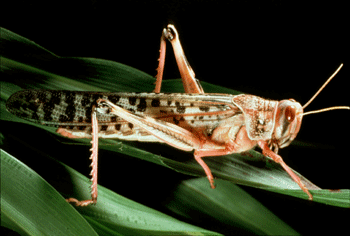Getting the Most Out of Your Dough: a fun home-based activity
Looking for an old-fashioned activity to do with a child or grandchild over the holiday break that’s fun, cheap, and educational? Why not use a slow afternoon to combine a few chemistry experiments along with a bread-baking lesson?
First, have your child help you make the bread. For the bread recipe you’ll need:
2 ½ cups warm water 3 tablespoons honey 3 tablespoons oil 1 package dry yeast 1 tablespoon salt 6 cups whole wheat flour
Pour the warm water, honey and oil into a large bowl. Add the yeast. (Note: In case anyone asks, here is the scientific explanation: Yeast is actually a living organism. To be activated, it must be mixed with a warm liquid and flour.) Let the mixture stand for a few minutes until the yeast begins to foam slightly. Gradually stir in about half the flour and salt until the mixture becomes too difficult to stir with a spoon. (The yeast feeds on the natural sugars found in the flour, producing a gas called carbon dioxide.)
Sprinkle some of the flour onto a wooden board and then knead the remainder of the flour and salt into the bread (about 10 minutes). (The kneaded flour and water have now created a sticky protein substance known as gluten.) When the bread is fully kneaded, put it back into the bowl, cover it with a towel, and put in a warm place. (The carbon dioxide is now trapped inside the sticky gluten and will begin to create tiny bubbles, forcing the bread to expand.)
Allow the bread to double its original size (about 1 ½ hours). Punch the bread down with your fist. (That hissing noise is the carbon dioxide escaping.) Form the bread into two loaves, place in well-oiled loaf pans, and re-cover with a dishtowel. Let the bread rise to the top of the loaf pans (about 1 hour). Place the loaf pans in a pre-heated oven and bake at 375 for 40 minutes. The bread is ready if it sounds hollow when tapped.
While you’re waiting for your bread to rise, you and your junior baker can try these two simple science experiments that demonstrate the chemistry happening inside your bread. You’ll need several empty plastic water bottles (beer bottles will do as well) and a package of large, round balloons.
Experiment #1: WHAT CAUSES THE BREAD TO RISE?
You can watch how yeast gas (carbon dioxide) is created by conducting the following experiment. Pour one package of yeast and ½ cup of sugar (remember, yeast feeds on sugars) into an empty water bottle. Add warm (not hot) water to the top of the bottle and then carefully put an empty balloon over the neck of the bottle. Wait 15-25 minutes. The substance should start to bubble. As the gas is being released, it will cause the balloon to gradually fill up. This same gas gets trapped inside the sticky bread dough and causes the bread to rise.
Experiment #2: WHY DOES THE RECIPE SAY TO USE WARM WATER?
Yeast can be very sensitive to different temperatures because it is alive. To discover how various temperatures can affect yeast, take three water bottles and fill each bottle with ½ package of dry yeast and ¼ cup of sugar. Add cold water to the first bottle, warm water to the second bottle and very hot water to the third bottle. Put a balloon on each bottle and then wait at least an hour. You will discover that the warmer the temperature, the faster the gas is generated. However, if the water is too hot, it kills the yeast and no gas is generated at all.
By now, your bread is on its way to the oven and your junior baker has gained a better of understanding of baking chemistry. Your last scientific experiment for the afternoon is easy — a taste test. No need for instructions here. Just wait for your bread to be done, sit, and enjoy.




















